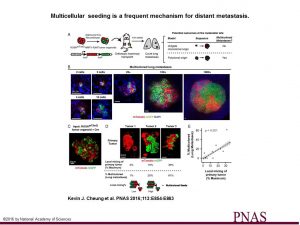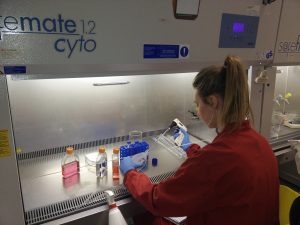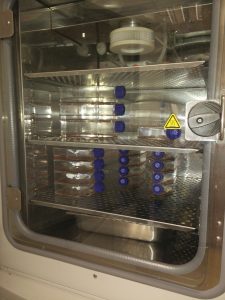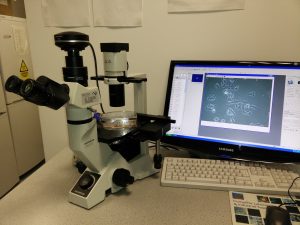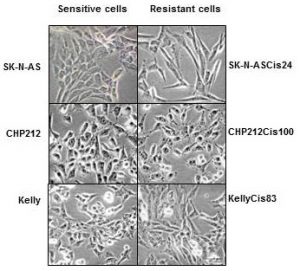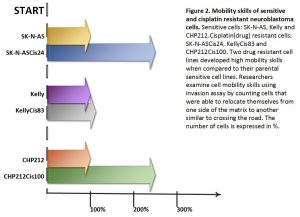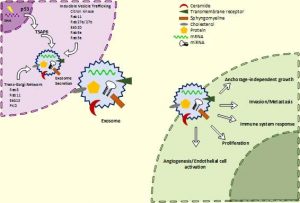We do not hear much on neuroblastoma or childhood cancer in our everyday life unless we know a child affected by the disease. How much information can we get from newspapers? How do newspapers report it? What is their focus – a child, his/her family or social circles? In the next posts I will try to get insights from the content of newspaper’s stories.
To start with, I needed to select those newspaper articles that cover a story of a child with cancer over a period of time. To do that I selected a recent period from January 1, 2010 to December 31, 2015 because two major events happened during this time.
The first was the 2011 Pulitzer Prize book written by Siddhartha Mukherjee ‘The Emperor of All Maladies: A Biography of Cancer’ which describing the history of both adult and childhood cancer treatment development and research (Mukherjee 2010). Importantly, this book inspired to produce a documentary film of three episodes of two hours each and released in 2015 (Goodman 2015). Researchers in social sciences agree that the publication of a prominent popular science book can lead to increased media interest in the issues raised in the book (e.g. (Nisbet & Fahy 2013).
Another most recent milestone was a breakthrough in childhood cancer management – the FDA approval of a novel drug Unituxin (dinutuximab) for neuroblastoma, the most common solid tumour in children (U.S. Food and Drug Administration 2015).
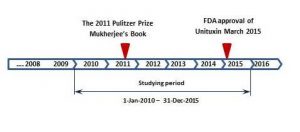
next step is actual paper selection. There is an archive of all newspapers and magazines called Nexis®UK database. This database stores copies of all printed papers and magazines worldwide as well as online versions.
Then an a search for articles carried out looking for key words:‘child’, ‘children’, ‘childhood’, ‘kid(s)’, ‘cancer (s)’, ‘tumour (s)’, ‘treatment’, ‘chemotherapy’, ‘radiation’ and their combinations. Only articles published by the UK national newspapers and included key words in either the headline or text were selected. The search returned 255 articles. Of 255 articles, 84 contained a story about a child with cancer. The rest were standardised obituaries in the ‘announcements’ or ‘deaths’ sections, horoscopes containing the word ‘cancer’, fundraising and charity activities not involving an identified child, funding initiatives related to pure cancer research and service, reports on scientific achievements or challenges were excluded.
The selected 84 articles were published by the broad range of local and national papers that are daily on sale through news outlets to a general public in the UK.
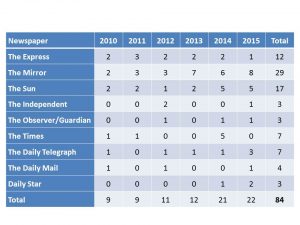
The Q1: What has been the level of media attention to childhood cancer?
In the last three years, in average 20 articles per year across 9 UK newspapers were published telling us a story about a child with cancer. In other terms it is less than 2 stories per month. It is not enough to raise awareness, educate the public and form their opinion. Tabloid editorial was more interested in this type of stories than broadsheet. This observation is likely due to the nature of tabloid paper interests looking for people personal stories, entertainment, sports and scandal.
Unfortunately, no change in media coverage of childhood cancer was observed around these two milestones (in 2011 and 2015). All together it suggests that neither of them had a strong influence on journalists or editorials regarding childhood cancer coverage.
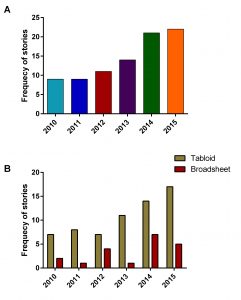
Interestingly, the growing trend in media coverage of children with cancer occurred by the increase in neuroblastoma coverage. Neuroblastoma had a nearly two fold boost in 2013 vs 2012 and then slightly declined in 2014 and 2015. Nevertheless, the FDA approval did not trigger attention to this cancer.
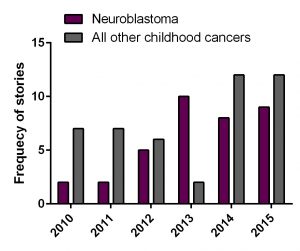
Reading
Goodman, B., 2015. Cancer: The Emperor of All Maladies, United States.
Mukherjee, S., 2010. The Emperor of All Maladies: A Biography of Cancer, US: Scribner.
U.S. Food and Drug Administration, 2015. FDA approves first therapy for high-risk neuroblastoma. FDA News Release.
* This study is a part of Dissertation submitted in partial fulfillment for the degree of M.Sc. in Science Communication


